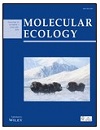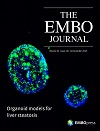Latest Publications
Interactions of long-term grazing and woody encroachment can shift soil biogeochemistry and microbiomes in savanna ecosystems
Ryan M. Mushinski, Yong Zhou, Ayumi Hyodo, Claudio Casola, Thomas W. Boutton
 We investigated the interactions between livestock grazing history (none, moderate, heavy) and vegetation cover (grassland, juniper, oak) using a ∼ 70-year grazing experiment in west-central Texas. We explored effects on soil organic carbon (SOC), total nitrogen (TN), total phosphorus (TP), microbial community composition, and function. The findings highlight how long-term livestock grazing and woody plant encroachment influence soil C, N, P cycles, altering soil microbial community structure and function. This study provides insights for savanna ecosystem management and integrating land cover effects into biogeochemical models for global change scenarios.
We investigated the interactions between livestock grazing history (none, moderate, heavy) and vegetation cover (grassland, juniper, oak) using a ∼ 70-year grazing experiment in west-central Texas. We explored effects on soil organic carbon (SOC), total nitrogen (TN), total phosphorus (TP), microbial community composition, and function. The findings highlight how long-term livestock grazing and woody plant encroachment influence soil C, N, P cycles, altering soil microbial community structure and function. This study provides insights for savanna ecosystem management and integrating land cover effects into biogeochemical models for global change scenarios.
Rapid diversification of grey mangroves (Avicennia marina) driven by geographic isolation and extreme environmental conditions in the Arabian Peninsula
 Guillermo Friis, Edward G. Smith, Catherine E. Lovelock, Alejandra Ortega, Alyssa Marshell, Carlos M. Duarte, John A. Burt
Guillermo Friis, Edward G. Smith, Catherine E. Lovelock, Alejandra Ortega, Alyssa Marshell, Carlos M. Duarte, John A. Burt
Biological systems occurring in ecologically heterogeneous and spatially discontinuous habitats provide an ideal opportunity to investigate the relative roles of neutral and selective factors in driving lineage diversification. The grey mangroves (Avicennia marina) of Arabia occur at the northern edge of the species' range and are subject to variable, often extreme, environmental conditions, as well as historic large fluctuations in habitat availability and connectivity resulting from Quaternary glacial cycles. Here, we analyse fully sequenced genomes sampled from 19 locations across the Red Sea, the Arabian Sea and the Persian/Arabian Gulf (PAG) to reconstruct the evolutionary history of the species in the region and to identify adaptive mechanisms of lineage diversification. Our results support a process of rapid diversification resulting from the combined effects of historical factors and ecological selection and reveal mangrove peripheral environments as relevant drivers of lineage diversity.
Gary Bending publications
 Quantifying microplastic dispersion due to density effects
Quantifying microplastic dispersion due to density effects
Stride, Ben, Abolfathi, Soroush, Bending, Gary D. and Pearson, Jonathan M
An experimental study was conducted on how polymer density affects the transport and fate of microplastics in aquatic flows. For the first time, polypropylene (PP), polyethylene (PE), polymethyl methacrylate (PMMA), polyetheretherketone (PEEK), and polyvinyl chloride (PVC) were chemically stained and tested using solute transport techniques and velocities found among rivers in the natural environment (0.016 – 0.361 m/s). Except for PP, in most conditions microplastics exhibited similar transport characteristics to solutes regardless of density and established solute transport models were successfully implemented to predict their transport and fate.. This data is the first to provide microplastic suspension and deposition thresholds based on river velocity and polymer density, making a key contribution to research predicting microplastic fate and organismal exposure.
Journal of Hazardous Materials. January 2024
 Distinct biogeographic patterns in Glomeromycotinian and Mucoromycotinian arbuscular mycorrhizal fungi across China: A meta-analysis
Distinct biogeographic patterns in Glomeromycotinian and Mucoromycotinian arbuscular mycorrhizal fungi across China: A meta-analysis
Zihao Liu, Jie Fang, Yucheng He, Gary D Bending, Bin Song, Yaping Guo, Xiaojie Wang, Zemin Fang, Jonathan M Adams
Fine root endophytes, recently reclassified as Mucoromycotinian arbuscular mycorrhizal fungi (M-AMF), are now recognized as functionally important as Glomeromycotinian AMF (G-AMF). Here, we investigated the biogeographic assemblies and ecological diversity patterns of both G-AMF and M-AMF, using published 18S rDNA amplicon datasets and associated metadata from 575 soil samples in six ecosystems across China. This study provides solid evidence that the two AMF groups have distinct ecological preferences at the continental scale in China, and also highlights the potential impacts of anthropogenic activities on distributions of AMF. These results advance our knowledge of the ecological differences between the two fungal groups in terrestrial ecosystems, suggesting the need for further field-based investigation that may lead to a more sophisticated understanding of ecosystem function and sustainable management.
Long noncoding RNA-mediated epigenetic regulation of auxin-related genes controls shade avoidance syndrome in Arabidopsis
 María Florencia Mammarella, Leandro Lucero, Nosheen Hussain, Aitor Muñoz-Lopez, Ying Huang, Lucia Ferrero, Guadalupe L Fernandez-Milmanda, Pablo Manavella, Moussa Benhamed, Martin Crespi, Carlos L Ballare, Jose Gutierrez-Marcos, Pilar Cubas, Federico Ariel
María Florencia Mammarella, Leandro Lucero, Nosheen Hussain, Aitor Muñoz-Lopez, Ying Huang, Lucia Ferrero, Guadalupe L Fernandez-Milmanda, Pablo Manavella, Moussa Benhamed, Martin Crespi, Carlos L Ballare, Jose Gutierrez-Marcos, Pilar Cubas, Federico Ariel
The long noncoding RNA (lncRNA) AUXIN-REGULATED PROMOTER LOOP (APOLO) recognizes a subset of target loci across the Arabidopsis thaliana genome by forming RNA–DNA hybrids (R-loops) and modulating local three-dimensional chromatin conformation. Here, we show that APOLO regulates shade avoidance syndrome by dynamically modulating expression of key factors. We show that direct application of APOLO RNA to leaves results in a rapid increase in auxin signaling that is associated with changes in the plant response to far-red light. Collectively, our data support the view that lncRNAs coordinate shade avoidance syndrome in A. thaliana, and reveal their potential as exogenous bioactive molecules. Deploying exogenous RNAs that modulate plant–environment interactions may therefore become a new tool for sustainable agriculture.
SKN-1/NRF2 up-regulation by vitamin A is conserved from nematodes to mammals and is critical for lifespan extension in Caenorhabditis elegan
 Chaweewan Sirakawin, Dongfa Lin, Ziyue Zhou, Xiaoxin Wang, Rhianne Kelleher, Shangyuan Huang, Weimiao Long, Andre Pires-da Silva, Yu Liu, Jingjing Wang, Ilya A. Vinnikov
Chaweewan Sirakawin, Dongfa Lin, Ziyue Zhou, Xiaoxin Wang, Rhianne Kelleher, Shangyuan Huang, Weimiao Long, Andre Pires-da Silva, Yu Liu, Jingjing Wang, Ilya A. Vinnikov
Vitamin A (VA) is a micronutrient essential for the physiology of many organisms, but its role in longevity and age-related diseases remains unclear. In this work, we used Caenorhabditis elegans to study the impact of various bioactive compounds on lifespan. We demonstrate that VA extends lifespan and reduces lipofuscin and fat accumulation while increasing resistance to heat and oxidative stress. This resistance can be attributed to high levels of detoxifying enzymes called glutathione S-transferases, induced by the transcription factor skinhead-1 (SKN-1). Notably, VA upregulated the transcript levels of skn-1 or its mammalian ortholog NRF2 in both C. elegans, human cells, and liver tissues of mice. Moreover, the loss-of-function genetic models demonstrated a critical involvement of the SKN-1 pathway in longevity extension by VA. Our study thus provides novel insights into the molecular mechanism of anti-aging and anti-oxidative effects of VA, suggesting that this micronutrient could be used for the prevention and/or treatment of age-related disorders.
Incidence of Human and Free-Ranging Wild Rodent Infections
 Orin Courtenay, José F Marinho-Júnior, Maria Edileuza F Brito, Juliana FCLS Monteiro, Jeffrey J Shaw, Sinval P. Brandão-Filho
Orin Courtenay, José F Marinho-Júnior, Maria Edileuza F Brito, Juliana FCLS Monteiro, Jeffrey J Shaw, Sinval P. Brandão-Filho
Human and wild rodent infection rates with Leishmania (Viannia) braziliensis are needed to differentiate transmission pathways in anthropogenically altered habitats. In this study, human participants in northeast Brazil were tested by the leishmanin skin test (LST) and inspected for lesions/scars characteristic of American clinical leishmaniasis (ACL). Molecular (PCR/qPCR) test records of free-ranging rodents were available from a concurrent capture–mark–recapture study. Force of Infection (λ) and recovery (ρ) rates were estimated from cross-sectional and longitudinal datasets. The results show human exposure to L. (V.) braziliensis continues to be high despite the substantial drop in reported ACL cases in recent years. Spill-over transmission risk to humans from rodents in peridomestic habitats is likely supported by a rodent infection/transmission corridor linking houses, plantations, and the Atlantic Forest.
